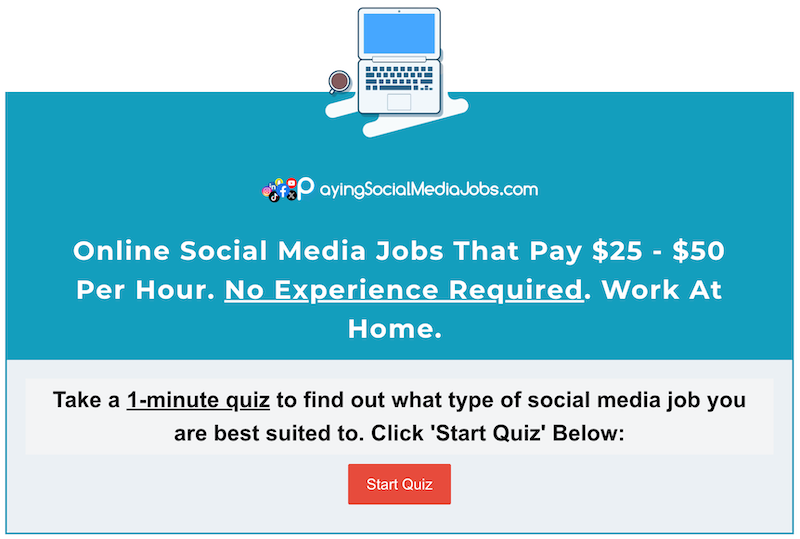A one-sided open relationship allows one partner freedom while the other remains exclusive. Here’s everything you need to know.
Have you ever found yourself crushing on someone while you’re in a relationship, but your partner is as committed to you as a dog is to a juicy bone? You’re not alone, and this tango has a name: the one-sided open relationship.
Unlike a completely open or polyamorous relationship, where all parties are free to explore relationships with others, a one-sided open relationship allows only one partner this freedom.
Confused, curious, or just plain stunned?
Understanding a one-sided open relationship
Wonder who came up with the notion of a one-sided open relationship? It’s not as contemporary as you might think. Let’s trace its origins, explore its psychological dimensions, and even look at some numbers.
Before we dive in, let’s answer the million dollar question: Who originated this idea? Believe it or not, varieties of one-sided open relationships have existed since, well, humans have.
Mate guarding, an evolutionary psychology concept, suggests that in early societies, one partner *often a male* would have multiple mates while the other remained faithful.
So, in short, one-sided open relationships are not as “modern” as you might think.
Now, what exactly is a one-sided open relationship? Simple: This is when one partner can explore relationships outside the relationship, while the other sticks to monogamy.
But why do people choose it? To answer this, let’s invoke party attachment theory.
Okay, number-crunchers, it’s your time to shine! According to a study published in the Archives of Sexual Behavior, approximately 4% to 5% of people in relationships in the United States report being in some form of open relationship.
However, statistics regarding one-sided open relationships in particular are a little more elusive. Yet, given the growing trend of ethical non-monogamy, it is safe to say that one-sided open relationships are becoming a notable piece of that pie.
Reasons people choose one-sided open relationships
If you’re scratching your head wondering, “What does that mean?” You are not alone. Although the concept of a one-sided open relationship may be shocking to some people, there are many reasons why people decide to take this path. Here, we’ll look at the motivations behind such a choice.
1. Seeking variety
For some people, a one-sided open relationship is like an endless buffet while still committing to their favorite dishes.
2. Curiosity and self-discovery
Imagine you’ve always been a “one-genre” music fan, but you’re curious about others. A one-sided open relationship can serve as a sandbox for self-discovery.
It allows one partner to explore different aspects of their personality and sexuality without ending the original relationship.
3. Addressing mismatched libidos
Low libido of one partner and high libido of the other can create tension in the relationship.
4. Situational needs
Sometimes life throws curveballs like long distance moves, extensive travel, or different work schedules.
5. Emotional balance
Contrary to what rom-coms tell us, one person can’t meet all of our emotional needs.
A one-sided open relationship can create an emotional balance where each person gets what they need, whether it’s more emotional support, intellectual stimulation, or simply different types of attention and care.
What to expect in a one-sided open relationship?
If you’re considering stepping into a one-sided open relationship scenario, it’s essential to know what territory you’re about to walk into.
From emotional rollercoasters to communication challenges, here are some important checkpoints to be aware of.
1. Emotional complexity
Expect an emotional kaleidoscope. A person who enjoys the freedom to date outside the relationship may feel elated, while a monogamous partner may struggle with feelings of jealousy or inadequacy.
2. Communication quirks
In a one-sided open relationship, you will need to develop Olympic-level communication skills.
Be it setting ground rules or addressing insecurities, transparent and frequent communication is the foundation of making this relationship dynamic.
3. Time Management
It’s not just about writing dates on the calendar, it’s also about managing emotional energy. The partner in a one-sided open relationship who is dating multiple people needs to balance their time and emotional investment effectively to ensure that their primary relationship does not suffer.
4. Social Perceptions
Be prepared for a mixed bag of social reactions. While some friends may encourage you to be “progressive,” others may criticize your relationship choices.
5. External collaboration
Don’t underestimate the power of a supportive community or mentor.
Whether it’s friends who understand or a relationship therapist who is familiar with the dynamics of a one-sided open relationship, outside input can provide new perspectives and coping strategies.
6. Financial implications
Let’s talk dollars and cents. Maintaining multiple relationships can have a financial impact on everything from the cost of dates to the cost of travel.
Transparency about expenses is important to avoid financial strain on primary relationships.
7. Ethical Considerations
Both partners should be on the same moral viewpoint. Is this ethical non-monogamy you’re practicing, or is it more of a “don’t ask, don’t tell” setup?
8. Expect the unexpected
Last but not least, be prepared for surprises. People change, emotions evolve, and what initially seemed like a great arrangement may need tweaking.
It’s important to be adaptable as you both grow within the parameters of your one-sided open relationship.
How to Explore a One-sided Open Relationship Without Losing Your Heart or Mind
So, you’ve decided to explore the maze that is a one-sided open relationship. Before you set out on this adventure, there are some basic but often overlooked guidelines that can make your trip less risky.
1. Communication is key
Transactional Analysis isn’t just a term for your Psychology 101 class, it’s the real deal in relationships. This involves understanding the ‘parent’, ‘adult’ and ‘child’ egos that exist in all of us.
2. Limits and limitations
You’ve heard it before, but we’ll say it again: Boundaries are important. Emotional boundaries, to be exact.
Knowing where you end and your partner begins is paramount in any relationship, but especially in a one-sided open relationship.
3. Safety first
Sure, we’re talking about emotional safety, but let’s not forget good old physical safety. Both partners need to be transparent about their health status, especially if one is meeting other people.
4. Consensual Non-Monogamy Agreement
Although it is not an official document, both parties must have a clear agreement about the terms of this one-sided open relationship.
5. Emotional check-in
Finally, make room for an emotional audit from time to time. The relationship landscape is not stable; It’s as dynamic as the stock market but without the Wall Street jargon.
Regular emotional check-ins can help you assess the health of your one-sided open relationship and make timely adjustments.
6. Digital etiquette
In the age of social media, it’s important to set some boundaries online. What is shared and what remains private can be an important issue.
Is it allowed to take photos with other partners on Instagram? Can you tag each other in tweets about your date nights? Knowing your digital do’s and don’ts can save you from many awkward situations.
7. “Veto Power”
Some couples introduce the idea of a “veto”, where either party can end an outside relationship if it begins to threaten the primary relationship.
Having this safety net can provide a sense of security, although it must be used judiciously to maintain trust.
8. Self-care routine
When one person goes out to explore, those left behind may feel a little isolated. This is a good time for some self-care.
9. Exit Strategy
Hate to be disappointed, but it’s always good to have an exit strategy in a one-sided open relationship. If things aren’t working, what’s the plan? An amicable separation? Couples therapy?
Knowing the steps to take can relieve some of the concerns associated with potential relationship issues.
10. Social Circle Dynamics
Let’s not forget about friend groups! Are you telling them about your unique relationship dynamics, or is it on a need-to-know basis?
And if you’re open about it, be prepared for a variety of reactions and questions. It may also change the dynamics of your social circle, so it may be helpful to be cautious.
How a one-sided open relationship can be your cup of sparkle
Yes, it may sound confusing, but you read that right! A one-sided open relationship isn’t just a Pandora’s box of complications, it can also be a treasure trove of benefits. let’s take a look.
1. Autonomy and independence
Remember the self-determination theory? Well, it shines brightly here. A one-sided open relationship can satisfy your soul’s need for autonomy like Red Bull.
2. Fulfillment of diverse needs
Have you ever tried to fit a square peg in a round hole? Sometimes our needs don’t exactly match our partner’s capabilities.
Enter Maslow’s hierarchy of needs, but let’s spice it up. In a one-sided open relationship, a person may try to satisfy different levels of needs – whether physical or emotional – with different partners.
Imagine getting both casual dining and delicious dinner without leaving the same restaurant.
3. Less tension in relationship
Let’s sprinkle some “relationship homeostasis” into the mix. Think of it like balancing an ecosystem, but for your love life.
A one-sided open relationship can sometimes reduce the strain on the primary partnership by outsourcing some needs.
So, instead of insisting on your relationship being the end-all, be-all, you distribute the load.
4. Social expansion
Being in a one-sided open relationship can sometimes feel like having VIP passes into different social circles.
Whether it’s networking or simply making new friends, the social benefits are worth mentioning. Just remember to respect the boundaries of each circle.
5. Keeps the spark alive
It may seem counterintuitive, but sometimes distance makes the heart grow fonder – or at least keeps it from getting bored.
The refreshing experience enjoyed by a partner may bring some unexpected excitement back into the primary relationship.
You can think of it as importing some exotic spices into your home kitchen, making everyday dishes taste completely new.
What things to keep in mind in a one-sided open relationship?
Let’s be real, there are pitfalls here that can turn your love story into a cautionary tale. Here are some things to consider.
1. Jealousy and insecurity
Truth be told, jealousy is almost natural in a one-sided open relationship. It’s like that unwanted guest at your dinner party that no one invited but shows up anyway. If the word ‘FOMO’ sends a shiver down your spine, brace yourself.
Thanks to social comparison theory, watching your partner cozy up to someone else can help you reevaluate your life choices faster than a TikTok video going viral.
And let’s be clear: If you’ve already crowned yourself ‘King or Queen of Jealousy,’ this relationship model may be a royal mess for you.
Welcome to XTalkies
Your Ultimate Destination for Entertainment and Stories!
At XTalkies, we bring the magic of cinema, storytelling, and digital entertainment straight to your screen. Whether you’re a movie enthusiast, a series binge-watcher, or someone looking for the latest updates in the world of entertainment, we’ve got you covered.









































